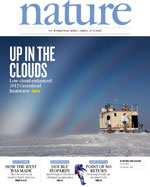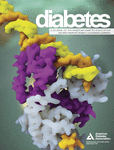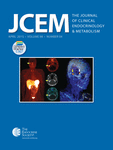Nature:糖尿病风险的肠道标记物
2013-06-18 Nature Nature
最新证据表明,被改变的肠道菌群与包括肥胖症、糖尿病和心血管疾病在内的各种代谢疾病相关。 Fredrik Backhed及其同事对一批血糖控制情况正常、受损或患有糖尿病的欧洲女性的粪便元基因组进行了定性,并将这些发现与最近被描述过的一批中国女性做了对比。 他们的分析显示了这两批女性研究对象之间在2-型糖尿病的判别性元基因组标记物上的差别,说明元基因组预测工作对于被研究人群的年龄和所在地域可能是有
最新证据表明,被改变的肠道菌群与包括肥胖症、糖尿病和心血管疾病在内的各种代谢疾病相关。
Fredrik Backhed及其同事对一批血糖控制情况正常、受损或患有糖尿病的欧洲女性的粪便元基因组进行了定性,并将这些发现与最近被描述过的一批中国女性做了对比。
他们的分析显示了这两批女性研究对象之间在2-型糖尿病的判别性元基因组标记物上的差别,说明元基因组预测工作对于被研究人群的年龄和所在地域可能是有特异性的。

Gut metagenome in European women with normal, impaired and diabetic glucose control
Type 2 diabetes (T2D) is a result of complex gene–environment interactions, and several risk factors have been identified, including age, family history, diet, sedentary lifestyle and obesity. Statistical models that combine known risk factors for T2D can partly identify individuals at high risk of developing the disease. However, these studies have so far indicated that human genetics contributes little to the models, whereas socio-demographic and environmental factors have greater influence1. Recent evidence suggests the importance of the gut microbiota as an environmental factor, and an altered gut microbiota has been linked to metabolic diseases including obesity2, 3, diabetes4 and cardiovascular disease5. Here we use shotgun sequencing to characterize the faecal metagenome of 145 European women with normal, impaired or diabetic glucose control. We observe compositional and functional alterations in the metagenomes of women with T2D, and develop a mathematical model based on metagenomic profiles that identified T2D with high accuracy. We applied this model to women with impaired glucose tolerance, and show that it can identify women who have a diabetes-like metabolism. Furthermore, glucose control and medication were unlikely to have major confounding effects. We also applied our model to a recently described Chinese cohort4 and show that the discriminant metagenomic markers for T2D differ between the European and Chinese cohorts. Therefore, metagenomic predictive tools for T2D should be specific for the age and geographical location of the populations studied.
本网站所有内容来源注明为“梅斯医学”或“MedSci原创”的文字、图片和音视频资料,版权均属于梅斯医学所有。非经授权,任何媒体、网站或个人不得转载,授权转载时须注明来源为“梅斯医学”。其它来源的文章系转载文章,或“梅斯号”自媒体发布的文章,仅系出于传递更多信息之目的,本站仅负责审核内容合规,其内容不代表本站立场,本站不负责内容的准确性和版权。如果存在侵权、或不希望被转载的媒体或个人可与我们联系,我们将立即进行删除处理。
在此留言










#Nat#
100
#标记物#
0